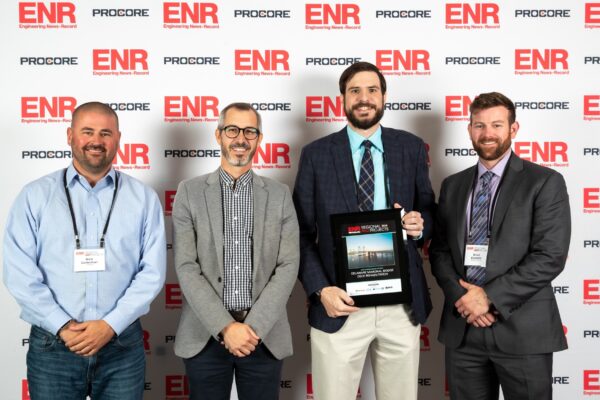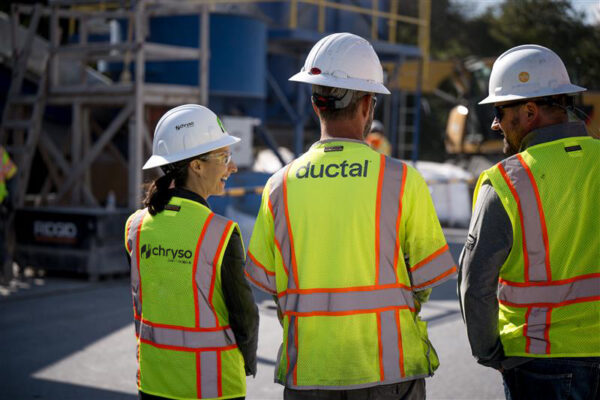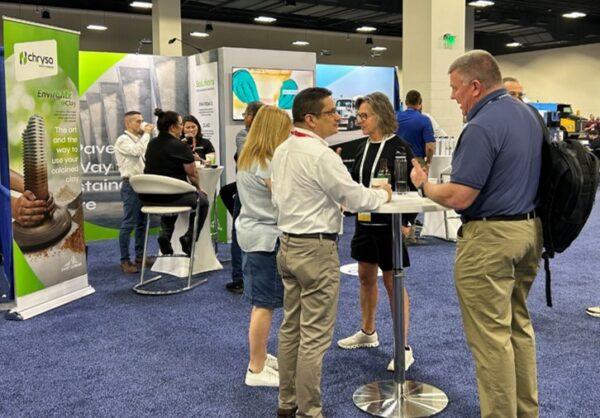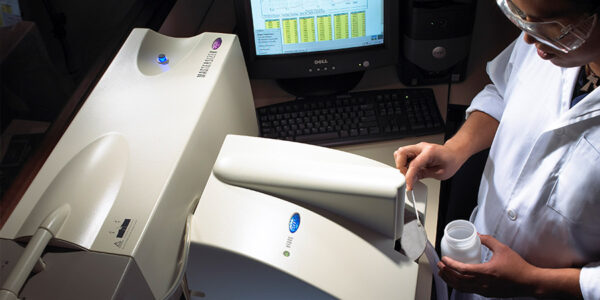Concrete Admixture Use with High Volume Fly Ash – TB-0113

The use of Fly Ash by Ready Mix producers continues to grow in the United States. In 1983, 31% of Ready Mix producers used Fly Ash in concrete mixes, with 46% of the concrete produced containing Fly Ash. By 1998 that number had grown to 94%, with 54% of concrete produced containing Fly Ash(1). Fly Ash contents in a concrete mix will vary but are normally 15% to 30% of total cementitious material. However amounts of 35% and greater have been used and are becoming more common. These concrete mixes have been reported by many sources in the literature(2)(3)(4) for some time, and are becoming increasingly more important to the building industry as a result of the advent of the US Green Building Council’s (USGBC) Leadership in Energy and Environmental Design (LEED) green building rating system.
Higher volumes of recycled materials in concrete can assist in a project achieving three (3) LEED credits, two in the Materials and Resources section and one in the Innovation section. The Recycled Content section is self-explanatory. The Innovation credit is based on a site-wide reduction in ordinary Portland cement (OPC) by 40% compared to the standard baseline mixes for a similar project. This reduction in OPC translates to an equal reduction in the amount of CO2 produced for the cementitious portion of the concrete. Utilizing High Volume Fly Ash (HVFA) mixes in a project is a way to achieve the needed 40% reduction. ACI 232.2R defines HVFA as concrete containing higher amounts of Fly Ash than normal, usually 50% or greater by mass of cementitious material in a concrete mix. The use of HVFA also is not new, but it has been rarely used until recently. Due to a variety of reasons, the use of HVFA is starting to increase.(5)(6)(7) High performance HVFA mixtures are generally defined as concrete with a maximum cementitious amount of 680 lbs/yd3 (400 kg/m3), low water-to-cementitious ratio of 0.35 or less, strengths greater than 4,000 psi (28 Mpa) and incorporate high range water reducers to produce a 6 in. to 8 in. (150 mm to 200 mm) slump.
The use of HVFA in concrete with strengths less than 4,000 psi (28 Mpa) is also growing. This Technical Bulletin will review some of the plastic and hardened concrete properties associated with HVFA concrete mixes, and the types and amounts of concrete admixtures needed for production of this type of concrete. Fly Ash is a supplementary cementitious material and is a by-product of the combustion of coal in power generating plants. Class F Fly Ash is common in the eastern portion of N. America, although some is produced in the West. Class C Fly Ash is predominately produced in the western and middle portions of N. America. Different sources of fly ash generally provide different performance in concrete due primarily to its chemistry, glass content, and fineness. For a good explanation of fly ash chemistry, the affects on plastic and hardened properties of concrete, and mixture proportioning, please see ACI 232.2R, Use of Fly Ash in Concrete.
In general, the addition of Fly Ash in the 15% to 30% replacement range to a concrete mix may provide the following effects to concrete properties:
Plastic Concrete
- Reduction of water requirements and corresponding addition rates of water reducer and high range water reducers
- Increased workability at equal slump
- Possibly less bleeding
- Increased air entraining agent dosage
- Longer setting time
Hardened Concrete
- Lower peak heat of hydration with Class F Fly Ash
- Class F Fly Ash provides lower early strength and increased later age strength
- Class C Fly Ash gains strength faster than Class F at earlier ages
When HVFA is used in concrete, there are similar but more pronounced effects on the concrete performance:
Plastic Concrete
- Longer setting times
- Less temperature rise during hydration
- Lower water requirements
Hardened Concrete
- Lower early age strengths
- Possible lower 28-day strengths
- Higher later age strengths even as far as 1 year
- Lower creep values
When HVFA is used in concrete in the 3,000 to 4,000 psi (21 to 28 Mpa) range and in certain structural applications, these changes to the concrete properties may be acceptable, although construction practices will have to be altered to accommodate these effects.(7) However, when HVFA is used in applications that require more workability and high performance, the use of an admixture system of high range water reducers to produce lower water-to-cementitious materials ratios, and set accelerators to counter-act the slower set times and strength gain, are required.
Multiple studies have been performed on fly ash concrete over many decades. More recently these studies have been extended to HVFA concrete. A major objective has been to identify concrete admixtures that can minimize early set retardation and improve early strength gain. The following table of results shows that a combination of ADVA® and DARASET® 400 provided the best solution for similar time of set strength in HVFA concrete as compared to concrete without Fly Ash.
ADVA® products are plant-added, polycarboxylate based, high range water reducers that are formulated to provide improved workability and high-early compressive strength to concrete. They may be used in both conventional concrete and self-consolidating concrete. DARASET® 400 is a nonchloride, non-corrosive set accelerator, also formulated to provide improved concrete strength.
Results will vary by cement and Fly Ash sources, other concrete materials, temperature and concrete making equipment. Consult with your representative to determine the most appropriate ADVA® and set accelerator products for your project requirements and materials. Local tests should be performed before any admixture and concrete materials are chosen for use.
Testing should also be performed as project requirements or environmental conditions change, or materials vary to insure the required concrete performance.
| Cement | Fly Ash Class F | Water | W/cm | ADVA® | DARASET® 400 | Slump | Initial set @ 72°F | 3 Day | 7 Day | 28 Day |
|---|---|---|---|---|---|---|---|---|---|---|
| lbs | lbs | lbs | (oz/100 lbs)* | (oz/100 lbs)* | in. | Hr:Min | psi | psi | psi | |
| 517 | 0 | 320 | 0.62 | 3 | 7.75 | 4:54 | 2640 | 3850 | 4720 | |
| 451 | 113 | 300 | 0.53 | 3 | 8.00 | 5:00 | 2690 | 3610 | 4600 | |
| 300 | 300 | 260 | 0.43 | 3 | 8.00 | 6:13 | 2080 | 2900 | 3720 | |
| 300 | 300 | 260 | 0.43 | 3 | 15 | 7.50 | 5:42 | 2300 | 3300 | 4300 |
| 300 | 300 | 260 | 0.43 | 3 | 30 | 7.25 | 4:47 | 2440 | 3540 | 4480 |
| Cement | Fly Ash Class F | Water | W/cm | ADVA® | DARASET® 400 | Slump | Initial set @ 72°F | 3 Day | 7 Day | 28 Day |
|---|---|---|---|---|---|---|---|---|---|---|
| Kg | Kg | Kg | (mL/100 kg)* | (mL/100 kg)* | mm | Hr:Min | MPa | MPa | MPa | |
| 235 | 0 | 145 | 0.62 | 195 | 195 | 4:54 | 18.2 | 26.6 | 32.6 | |
| 205 | 50 | 135 | 0.53 | 195 | 205 | 5:00 | 18.6 | 24.9 | 31.7 | |
| 135 | 135 | 118 | 0.43 | 195 | 205 | 6:13 | 14.4 | 20.0 | 25.7 | |
| 135 | 135 | 118 | 0.43 | 195 | 980 | 190 | 5:42 | 15.9 | 22.8 | 29.7 |
| 135 | 135 | 118 | 0.43 | 195 | 1955 | 185 | 4:47 | 16.8 | 24.4 | 30.9 |
* Addition rate based on total cementitious
References:
- Portland Cement Association, 2000, Survey of Mineral Admixtures and Blended Cement in Ready Mix Concrete, PCA, 16 pp.
- Camoes, Rocha, Jalali, de Aguiar and Delgado, 2002, High Performance Concrete Using Fly Ash, High-Performance
- Concrete Proceedings Third International Conference, Recife, Brazil, SP-207, pp. 15-31.
- Mehta and Burrows, 2001, Building Durable Structures in the 21st Century, Concrete International, V. 23, No. 3, pp. 57-63
- PCA Design and Control
- Malholtra, Mehta, 2002, High-Performance, High Volume Fly Ash Concrete: Materials, Mixture Proportioning, Properties, Construction Practices, and Case Histories, CANMET, Ottawa, Canada.
- Malhotra, 2002, High Performance High Volume Concrete, Concrete International, July 2002
- Vargas, 2007, A Designer’s View of Fly Ash Concrete, Concrete International, Feb. 2007





